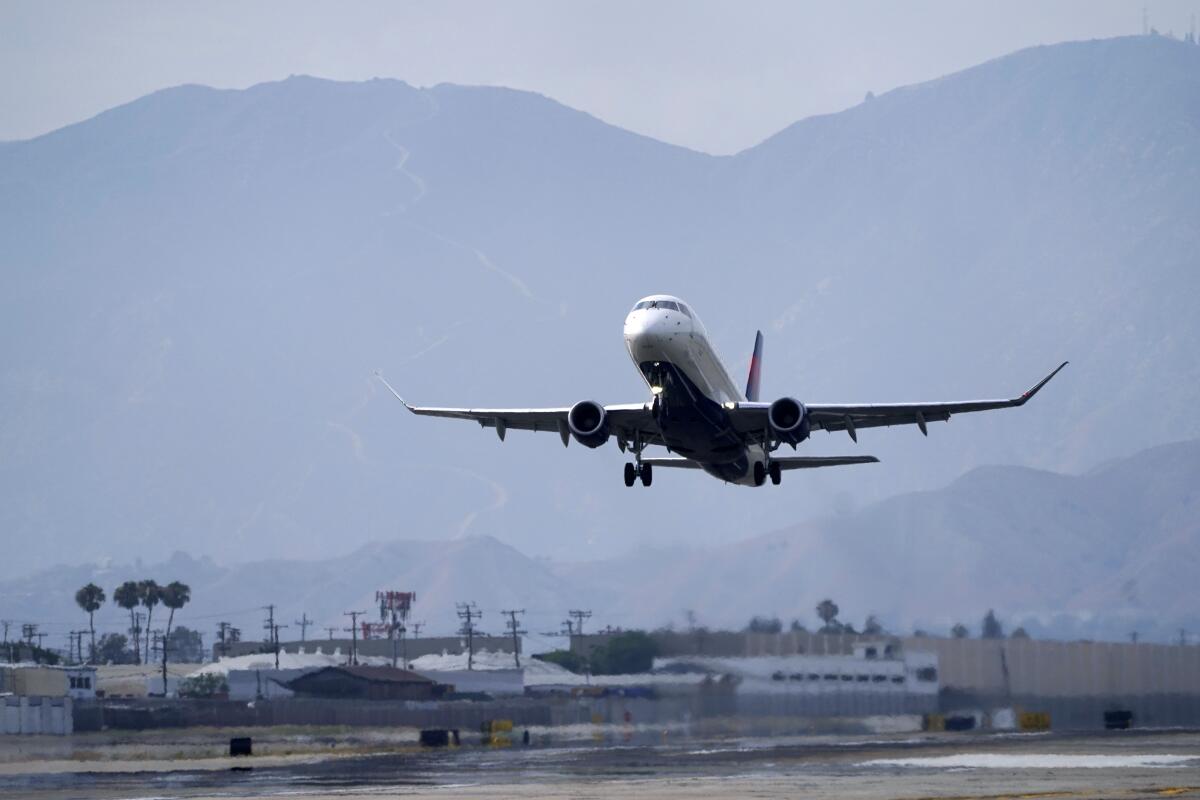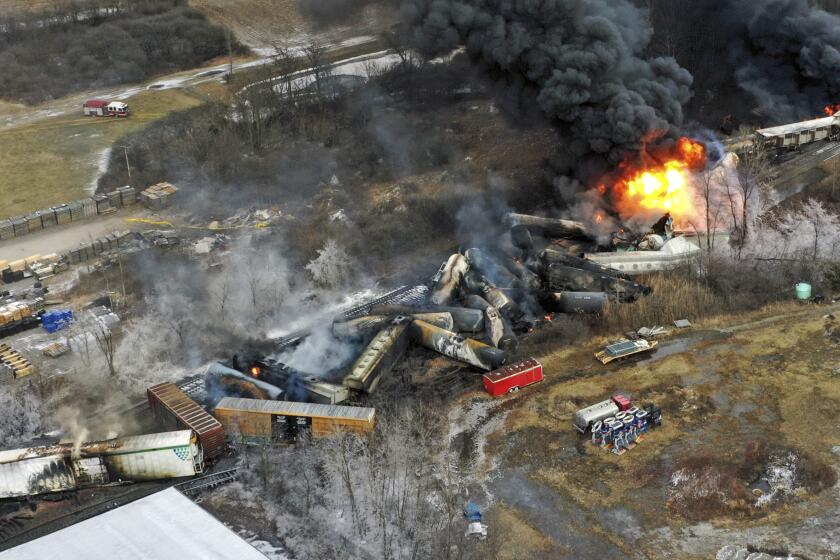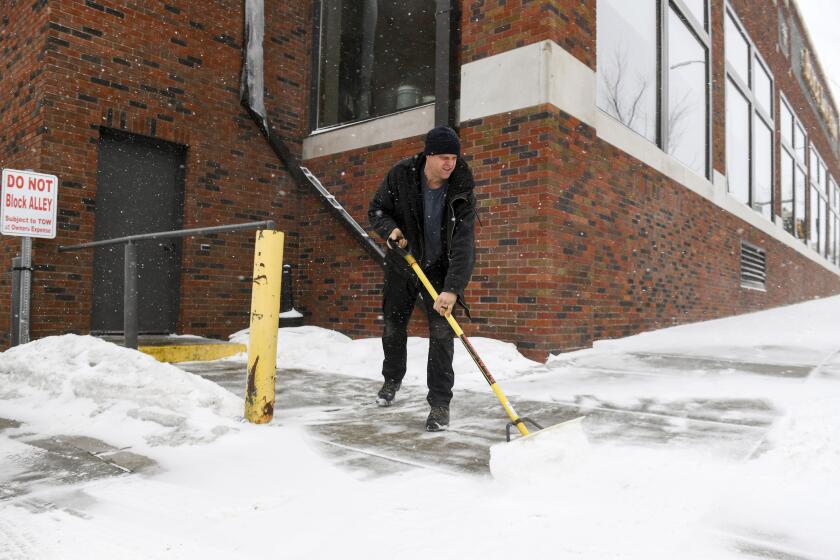Burbank aborted landing was latest close call for U.S. flights. Here’s why experts say not to worry

- Share via
A flight arriving at Hollywood Burbank Airport this week was forced to abort its landing about 1,000 feet above the runway after an air traffic controller cleared another flight for takeoff at the same time, the Federal Aviation Administration said.
The aborted Mesa Airlines landing was the latest in a string of errors involving U.S. flights and airports that have led to near misses between planes and left passengers holding their breath. But the high-profile incidents don’t necessarily mean there is a trend toward more mistakes occurring, according to the FAA and aviation experts, who say it is still the safest time to fly in history.
“There are a lot of airports in the United States and a lot of daily takeoffs and landings — on the order of 5,000. So having one or two [issues] occur in a week’s time is not a large number in comparison to the total number,” said Robert Ditchey, an aviation expert and former Navy pilot.
The Mesa Airlines flight was 1.3 miles from Burbank airport when it was forced to start regaining altitude in order to avoid a collision with a SkyWest Airlines Embraer E175 that was taking off from Runway 33 around 6:55 p.m. Wednesday, the FAA said.
The National Transportation Safety Board is investigating the incident, it said Friday.
The crew of a train that derailed in Ohio received a warning about an overheated axle only just before the cars went off the tracks, the NTSB says.
The issue was likely “human error” on the part of the air traffic controller who cleared the SkyWest flight for takeoff as another flight was coming in to land, Ditchey said. Still, he added, the pilot in the Mesa aircraft would have been the final decision maker on landing in a clear path.
Aborting a landing while still 1,000 feet up is easy for pilots, Ditchey said.
“People should be thankful that the safety system as designed and experienced in this country worked as supposed to,” he said. “Give credit where credit is due. There was no accident. We should be happy. We’re pretty damn good in the United States in preventing accidents.”
The aborted landing comes just a month after a Delta flight taking off from John F. Kennedy International Airport in New York nearly struck an American Airlines flight that was crossing the runway at the same time. The Delta plane came to a stop about 1,000 feet before it would have struck the other, according to the FAA.
In December, a United Airlines flight heading to San Francisco from Maui nearly plunged into the Pacific shortly after takeoff under unclear circumstances. The FAA said there was nothing wrong with the plane and that the pilots received “additional training” after the incident, in which the plane plummeted from 2,200 feet to 775 feet above the water in less than 20 seconds.
And earlier this month, a taxiing American Airlines plane struck a shuttle bus on the tarmac at Los Angeles International Airport, injuring four people.
A massive winter storm whipped the northern U.S. while record highs were forecast in the South on a wild weather day across the nation.
The FAA seemingly took notice of some of the issues on Valentine’s Day when it cited “recent events” as the reason for renewed scrutiny of its safety practices.
“We must ensure that our structure is fit for purpose for the U.S. aerospace system of both today and the future. That’s why I’m forming a safety review team to examine the U.S. aerospace system’s structure, culture, processes, systems, and integration of safety efforts,” FAA acting Administrator Billy Nolen said in a memorandum to the FAA’s Management Board.
The memo said it would focus on the “internal processes, systems, and operational integration” of the Air Traffic Organization, the arm of the FAA that oversees air traffic controllers, technicians and engineers.
“We know that our aviation system is changing dramatically. Now is the time to act,” Nolen wrote.
More to Read
Sign up for Essential California
The most important California stories and recommendations in your inbox every morning.
You may occasionally receive promotional content from the Los Angeles Times.
















